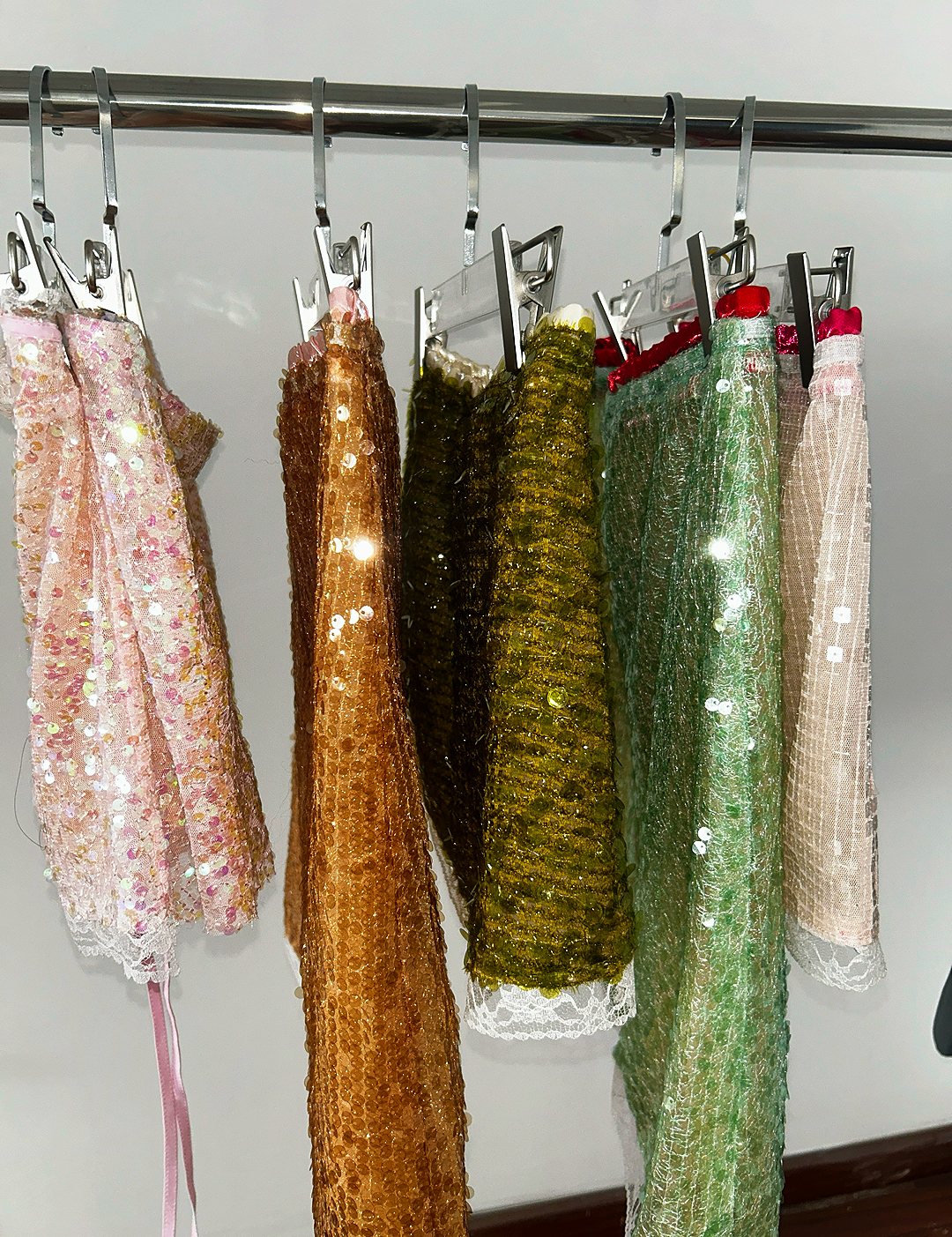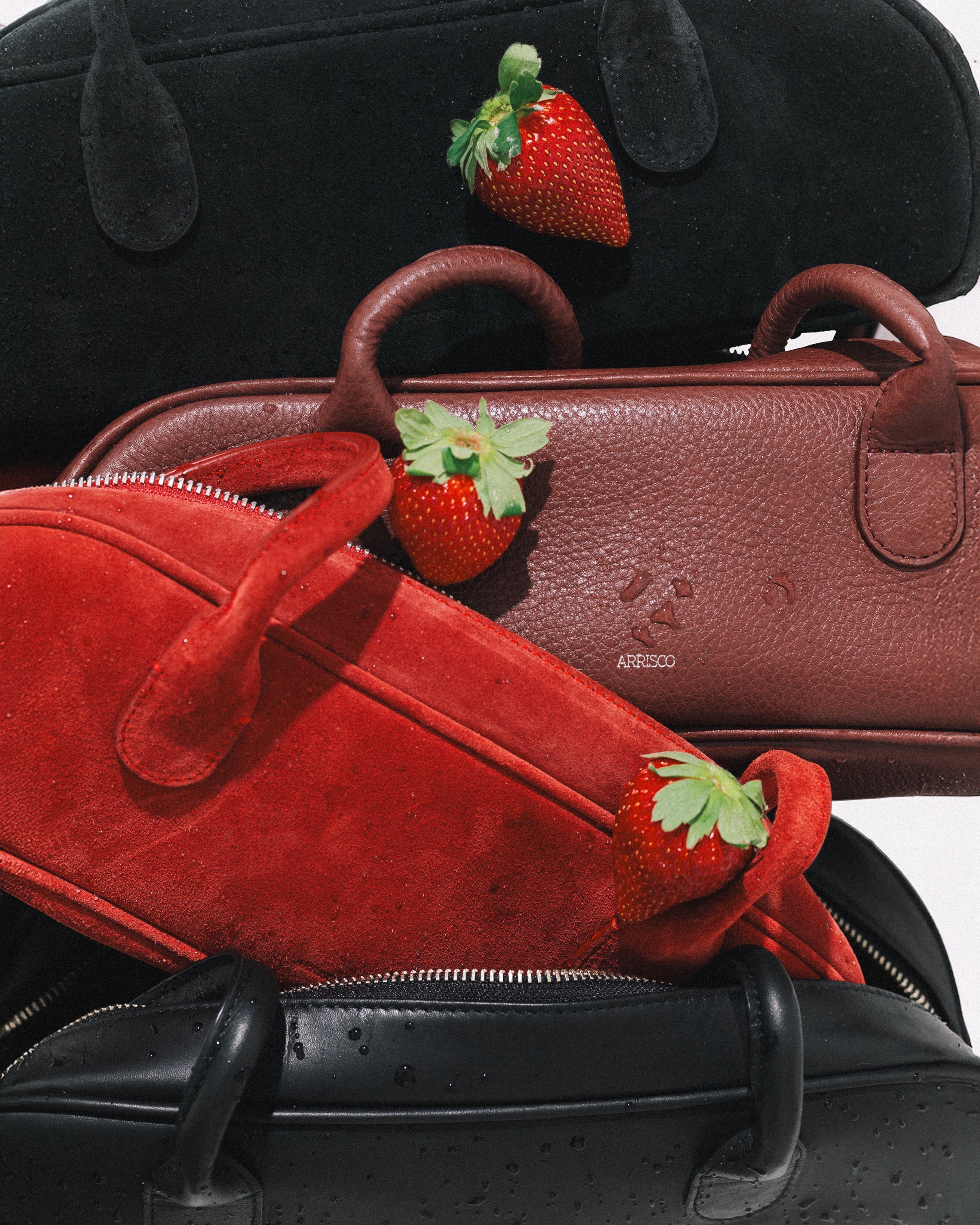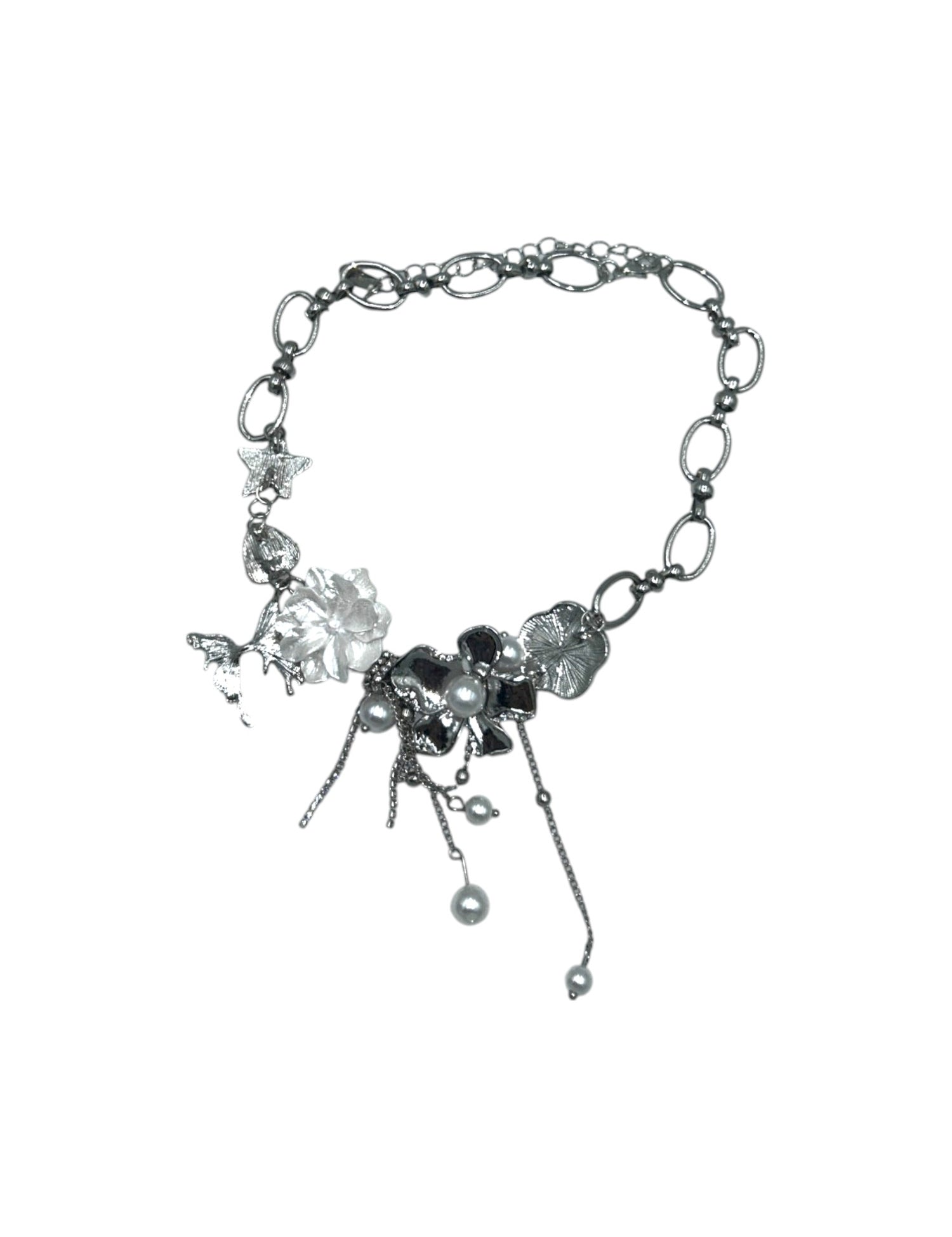Knowing how to take accurate body measurements is your superpower for building a wardrobe you love and tracking fitness progress with total confidence. It’s all about using a flexible tape measure on key spots—like your bust, waist, and hips—while standing naturally. When you get this right, you take the guesswork out of online shopping and get real, reliable data for your health journey.
Your Foundation for a Perfect Fit
Let's put an end to the frustration of online returns and the letdown of a new shirt that just doesn't hang right. Seriously, learning to take your own measurements is a total game-changer. It puts you in the driver's seat of your style and your fitness goals, finally closing the gap between how clothes look on a screen and how they actually feel on your body.
Think of this guide as your new best friend for getting that perfect fit, every single time. Whether you’re investing in a custom suit, hunting for those elusive perfect-fit jeans, or just keeping an eye on your physique, accuracy is everything. Even a tiny half-inch can make all the difference in how a garment drapes and feels.

Why Precision Matters So Much
Your measurements are like a unique blueprint of your body. When that blueprint is spot-on, you can shop from any brand, anywhere in the world, with confidence. This is a huge deal, especially with how wildly inconsistent sizing is across the fashion industry—a "medium" in one store can easily be a "large" in another. Your personal measurements become the one reliable standard you can always trust.
And it goes beyond shopping! These numbers are incredible motivators. They give you tangible proof of your hard work at the gym that the scale might not reflect. Gaining muscle while losing fat sometimes means the number on the scale barely budges, but believe me, the measuring tape never lies.
The goal isn't just to get numbers; it's to get the right numbers. Consistent, accurate measurements are the difference between a good fit and a perfect fit, turning online shopping from a gamble into a guaranteed success.
Setting the Stage for Success
Before we get into the nitty-gritty of measuring each body part, we need to cover the basics. Consistency is key. That means you should always try to measure under the same conditions. A great routine is to do it in the morning before you’ve had anything to eat or drink, and while wearing minimal, form-fitting clothing (like leggings and a tank top).
First, we'll walk through the simple tools you’ll need and the ground rules for posture and technique. Nailing these core concepts ensures every measurement you take from now on is as accurate as it can possibly be. Taking a moment to build this foundation will pay off big time, and learning more about dressing for your body type in our guide will help you put these numbers to fantastic use.
To get you started, here’s a handy little cheat sheet for the most common measurements. It’s a great way to get familiar with the fundamentals before we dive deeper into each one.
Quick Reference Cheat Sheet for Core Measurements
| Measurement Area | Where to Measure | Key Tip for Accuracy |
|---|---|---|
| Bust/Chest | The fullest part, keeping the tape parallel to the floor. | Don't pull the tape too tight—it should be snug, not constricting. |
| Waist | Your natural waistline, usually above the belly button. | Relax and exhale naturally; don't suck in your stomach! |
| Hips | The widest point of your hips and seat. | Keep your feet together to get the most accurate number. |
| Inseam | From the very top of your inner thigh down to your ankle. | It's much easier with a friend, but you can do it against a wall. |
Use this as a quick reference, and you'll be well on your way to measurement mastery
Setting Up Your Measurement Toolkit
You don't need a fancy, high-tech lab to get this right, but a few key tools will absolutely make or break your results. Think of this as building your personal fit kit. Getting it right from the jump is the secret to nailing how to take accurate body measurements every single time.
First things first, the undisputed star of this operation is a flexible, non-stretch tape measure. I’m talking about the soft plastic or fiberglass kind you see at a craft or fabric store. Whatever you do, do not grab that metal one out of the toolbox! It’s too rigid and simply can’t hug your body’s natural curves, which will throw your numbers off completely.
When you're picking one out, make sure it’s at least 60 inches long and has markings that are super clear and easy to read. Bonus points if it has inches on one side and centimeters on the other. Here's a pro tip: before you start, lay it flat next to a standard ruler just to double-check its accuracy. It’s a quick little test that ensures your most important tool is one you can trust.
Essential Accessories for Total Accuracy
Okay, beyond the tape measure, there are a couple of other things that will take your setup from pretty good to practically professional. These are your trusty sidekicks for getting consistent, reliable numbers.
A full-length mirror is your best friend here. Seriously, don't skip this. It's the only way you can really see if your tape measure is level all the way around your body, especially for those bust, waist, and hip measurements. It's so easy for the tape to dip down in the back where you can't see, and that one little mistake can completely skew the final number.
You'll also need something to jot down your numbers. A classic notebook and pen works great, or you could go digital with a notes app or spreadsheet on your phone. The specific method isn't what's important—consistency is. Keeping a log helps you track how your body changes and gives you a reliable set of numbers to work with. This is especially handy when you’re plugging those digits into modern shopping tools. In fact, many brands are now using amazing tech that relies on these exact numbers; you can learn more about how virtual try-on technology is changing online shopping and making it a breeze to find your perfect size.
What to Wear When You Measure
Alright, let's talk wardrobe. What you wear—or don't wear—is a step people mess up all the time, but it’s absolutely critical for getting your true measurements.
Your clothing choice can add or subtract inches, completely undermining your efforts. The goal is to measure your body, not your outfit.
For the best, most honest results, you really want to measure while in your underwear or in something very thin and form-fitting, like a pair of leggings and a tank top. Steer clear of measuring over bulky clothes like jeans, chunky sweaters, or even baggy t-shirts. All that extra fabric creates a buffer between the tape and your body, which will give you inflated numbers and lead you to buy the wrong size.
By prepping your toolkit and dressing the part, you're building a rock-solid foundation for measurement success. You’ve got this
Mastering Key Body Part Measurements
Alright, let's get to the good stuff—turning all that prep work into a set of numbers you can actually trust. This is where you stop guessing and start truly understanding the unique contours of your body. We're going to pinpoint the exact anatomical landmarks for each measurement, so you can nail it every single time.
This isn't just about reading a number off a tape. It’s about knowing why you're measuring a specific spot and how to hold the tape to get a true reading. Think of this as your go-to guide, the one you’ll come back to again and again for a quick refresher.
Once you’ve got these core measurements down, applying them to specific garments becomes second nature. For example, learning how to measure yourself for a suit will feel like a breeze, empowering you to find that perfect, sharp-looking fit with total confidence.
Measuring Your Bust or Chest
The bust or chest measurement is probably the most important one for getting tops, dresses, and jackets to fit just right. Get this wrong, and you're stuck with gaping buttons or a fit so tight you can barely move. The goal here is simple: measure the fullest part of your chest and keep that tape perfectly level.
Here’s how to do it right:
- Find the Sweet Spot: Stand in front of a mirror and wrap the tape around the absolute fullest part of your bust. For most people, this is right across the nipple line.
- Keep It Level: Your mirror is your best friend here! Glance at your reflection and make sure the tape is parallel to the floor all the way around your back. No sagging!
- Get the Tension Just Right: You want the tape to be snug, but not so tight that it's digging in. A good rule of thumb is that you should be able to easily slide one finger underneath it. Never compress your breast tissue—that’ll give you a reading that’s too small.
- Breathe Normally: Just take a normal breath in and let it out. Jot down the number after you've exhaled.
If you’re measuring a bust, I always recommend wearing the kind of non-padded bra you’d typically pair with the item you're shopping for. For an even more detailed walkthrough, check out our complete guide on how to calculate your bra size for some extra-specific tips!
Finding Your True Waist
The waist measurement trips so many people up. Is it where your jeans sit? Is it your belly button? Nope! Your natural waist is actually the narrowest part of your torso, usually found about an inch above your belly button, just under your rib cage.
Here's my favorite trick for finding it: Bend to one side as if you're doing a side crunch. See that crease that forms? That's your natural waist. That's exactly where you need to measure!
Once you've found it, wrap the tape measure around that spot. Just like before, make sure it’s parallel to the floor and snug, but not constricting. And please, relax your stomach and breathe out normally before you take the number. No sucking in—we want your real measurements for a comfortable fit! This number is a game-changer for high-waisted pants, skirts, and fitted dresses.
Getting an Accurate Hip Measurement
Your hip measurement is absolutely key for a great fit in pants, skirts, and especially form-fitting dresses. You want to find the absolute widest point of your lower body to make sure clothes slide on without a struggle and hang beautifully.
First, stand with your feet together. This is a small detail, but it’s super important because standing with them apart can add an inch or more to your measurement! Now, wrap the tape around the fullest part of your hips and butt. Use your mirror to take a peek from the side and confirm the tape is perfectly level all the way around. Snug, but not tight, is the mantra here, too.

This process really comes down to these three simple actions: measure with the tape, verify in the mirror, and write it down!
Nailing the Inseam and Thighs
Ah, the inseam. This is what makes the difference between pants that bunch up at your ankles and ones that look like you're preparing for a flood. It's definitely one of the trickiest to measure on your own, but totally doable. The inseam runs from the very top of your inner thigh, right up against the crotch, down to where you want the pants to end—usually your ankle bone.
Here's a fantastic hack for getting your inseam right:
- Grab a pair of pants you already own that are the perfect length.
- Lay them out flat on a table or the floor.
- Measure them from the crotch seam straight down the inside of the leg to the very bottom of the hem. Easy!
For your thigh measurement—which is super helpful for shorts and trousers—just wrap the tape around the fullest part of one thigh. This is typically an inch or two below your crotch. Just stand naturally and make sure the tape is level.
Defining Your Shoulders
Your shoulder width is the secret to a great-fitting jacket, blazer, or any structured top. The wrong measurement here is what causes that awkward pulling across your back or, on the flip side, a sloppy, oversized look.
This one is a lot easier with a buddy, but you can pull it off solo. Stand up straight but keep your shoulders relaxed. You're going to measure from the bony point of one shoulder (that's the acromion bone) straight across your back to the same point on the other shoulder. Let the tape follow the natural curve of your upper back.
From Numbers to Fit: Decoding Size Charts
You did it! You’ve got a reliable set of your own personal measurements. So, now what? This is where the real magic happens—turning those numbers into clothes that feel like they were made just for you. With your measurements in hand, you're officially ready to conquer the wild world of online shopping.
Let's get one thing straight: there's no such thing as universal sizing. A size 'medium' from one brand can feel completely different from another's. Heck, even within the same brand, sizing can change from one collection to the next. This frustrating reality is exactly why your personal measurements are the only standard that truly matters. They're your truth.
Why Are Brand Size Charts So Different?
Ever wondered why you can be a size 8 in one store and a 12 in another? It's not you, and it's not an accident—it's by design. Every brand builds its size chart around a "fit model," a real person whose body they consider their ideal customer. If a brand targets a younger, athletic demographic, their size medium will be cut very differently than a brand catering to a curvier or more mature audience.
This is why blindly trusting a letter on a tag is a recipe for a bad fit. Your measurements are your secret weapon. When you're shopping online, make a beeline for the brand's specific size chart. Don't just glance at it—really compare your bust, waist, and hip numbers to their guide.
It's a good reminder that simple numbers don't always tell the whole story about our unique bodies. For instance, the commonly used Body Mass Index (BMI) has been shown to misclassify obesity when compared to more precise methods. One study found that BMI could underestimate obesity rates by over 40% in some groups! If you're curious, you can read the full research on body composition analysis. It just proves that our true shape is far more complex than a single metric.
Prioritizing Your Most Important Measurement
Okay, so what do you do when your measurements fall across multiple sizes? Welcome to the club! This happens to almost everyone. Maybe your bust fits a 'large' but your waist is a 'medium'. The key is to prioritize the most critical measurement for the specific garment you're buying.
Here’s a quick cheat sheet I’ve learned over the years:
- For Tops, Dresses, and Jackets: Your bust measurement is king. It’s way easier for a tailor to take in a waist than it is to fix a chest that’s too tight or gaping.
- For Pants, Jeans, and Skirts: Always focus on your hip measurement. The waist can often be altered, but if a pair of pants can’t get past your hips, it's game over.
- For Jumpsuits and Bodysuits: The torso length (if the brand provides it) is crucial to avoid uncomfortable pulling or sagging. After that, look at the bust and hips.
And if you're shopping from brands outside your home country, the sizing can get even trickier. To help translate all those different numbers, we put together a comprehensive international size chart conversion guide to make it easy.
The Future of Fit: Virtual Try-On Tools
This is where online shopping gets really exciting! Forward-thinking brands like Arrisco are moving beyond static size charts and using virtual fit tools to give you truly personalized recommendations. This amazing technology takes the guesswork completely out of the equation.
Virtual fit tools don't just match your numbers to a chart. They use smart algorithms to analyze a garment's design, cut, and fabric to predict how it will actually drape and fit on your unique body shape.
You just pop in your accurate measurements, and the tool will recommend the best size for you. Sometimes, it even adds helpful notes like "a snug fit in the bust" or "a relaxed fit at the waist." This level of detail transforms online shopping from a risky gamble into a confident, personalized experience. It's a game-changer for finding the perfect fit and helps dramatically reduce the waste from returns.
Oops! Common Measuring Mistakes and How to Nail It Every Time
Even with the best intentions, it's so easy for little mistakes to creep in and throw your numbers off. And when that happens, you end up with a fit that's... well, just off. Getting your measurements right is as much about knowing what not to do as it is what to do!
So, let's dive into the most common slip-ups I see all the time and, more importantly, the super simple ways to fix them. Think of this as your personal troubleshooting guide—once you master these quick corrections, you'll be taking measurements you can trust completely.

The "Death Grip" Tape
This is mistake number one for a reason—we've all done it! You pull the tape measure so tight that it digs into your skin, thinking tighter means more accurate. But what it actually does is compress your body, giving you a smaller number that won't translate to a comfortable fit.
The Fix: Use the "one-finger trick." It's my go-to rule of thumb. Once the tape is around your body, you should be able to slide one finger snugly between the tape and your skin. Can't fit a finger? It's too tight. Can you fit your whole hand? Way too loose. Just one finger is the sweet spot.
The Sagging or Slanted Tape
Here’s a sneaky one. A droopy tape measure, especially across your back where you can’t see it, is a classic culprit for inaccurate numbers. If the tape isn't perfectly level and parallel to the floor for those key circumference measurements (bust, waist, hips), you’re accidentally adding extra length.
The Fix: Make friends with your full-length mirror! Stand sideways to it so you can see your entire profile. This angle is perfect for spotting a droopy tape and making sure it’s running straight and level all the way around.
Measuring Over Your Clothes
It’s tempting to just throw the tape over your t-shirt and jeans, but this is a guaranteed way to add inches. Even thin fabric creates a barrier, and bulky clothes like sweaters or jeans can add a lot.
The Fix: This one’s easy! For the most accurate results, measure in your underwear or minimal, form-fitting clothing like a tank top and leggings. Remember, you want to measure your body, not your outfit!
"Sucking It In" or Slouching
Come on, you know you do it! The second a measuring tape comes out, we have this reflex to suck in our stomach or stand in a stiff, unnatural pose. This completely defeats the purpose of finding clothes that fit your real, everyday body.
The whole point is to measure your body in its natural, relaxed state. This ensures the clothes you choose will feel great while you're living your life—not just for the two seconds you can hold your breath.
The Fix: Before you start, take a nice deep breath in and then let it all out with a sigh. Let your shoulders drop and your stomach relax. Stand tall but comfortably, with your weight balanced on both feet. That’s the posture that will give you a truly useful measurement.
Let's be real, the manual process can be tricky. That's why technology is getting in on the game. A fascinating study comparing manual measuring to 3D body scanning found the scanners had a precision rate of over 97.25%, which just goes to show how much human error can be a factor. It highlights the constant drive for a perfect fit, and you can read the full research on 3D body scanning methods if you're curious to learn more.
Got Questions? We’ve Got Answers!
Once you start measuring, a few questions are bound to pop up. And honestly, that’s a great sign! It shows you’re really digging in and thinking about how to get this right. Let’s clear up some of the most common ones so you can feel totally confident in your numbers.
Think of this as your go-to FAQ for getting the perfect fit.
How Often Should I Remeasure?
This is a fantastic question, and the answer isn't one-size-fits-all—it really boils down to why you're measuring in the first place.
- For Fitness Goals: If you're hitting the gym or starting a new health journey, measuring every 4-6 weeks is perfect. It gives your body enough time to show real, meaningful progress beyond the normal day-to-day fluctuations.
- For Shopping: You can relax a bit here! A quick check-in every 6-12 months is usually plenty. The big exception? If you feel your clothes are starting to fit differently, that’s your cue to grab the tape and get a fresh set of numbers before your next online shopping session.
No matter how often you measure, consistency is everything. I always recommend measuring in the morning, under the same conditions, to make sure you're comparing apples to apples.
Can I Really Get Accurate Measurements By Myself?
You absolutely can! Having a helper can make spots like your shoulder width a little less awkward, but with a mirror and some patience, you can totally nail it solo.
Your full-length mirror is your best friend here. Use it to double-check that the tape is straight and level all the way around for your bust, waist, and hips. For that tricky inseam measurement, I have a go-to hack: just measure a pair of pants you already own and love! Lay them flat and measure from the crotch seam straight down to the hem. It works like a charm every time.
What's the Single Most Important Measurement?
Ah, the golden question! The truth is, it completely depends on what you're buying. Different garments hang from different parts of your body, so you need to focus on the key "fit point" for each piece.
Here’s my cheat sheet:
- For tops and dresses, your bust measurement is king. A tailor can easily take in a waist, but there’s not much they can do if the chest is too tight. Start there.
- For pants and skirts, it’s all about the hips. If you can't pull a pair of pants up over your hips, the waist size doesn't matter one bit. Always prioritize the hip measurement for bottoms.
Knowing which number to focus on is a game-changer for online shopping. If you're looking for more pro tips, you'll love our guide on how to shop for clothes online and make every purchase a win.
Now you have the know-how to measure like a pro and shop with total confidence. At Arrisco, we take those precise measurements and run them through our virtual fit tools to find your perfect size. It’s all about taking the guesswork out of the equation so you can find pieces you’ll absolutely love.



































